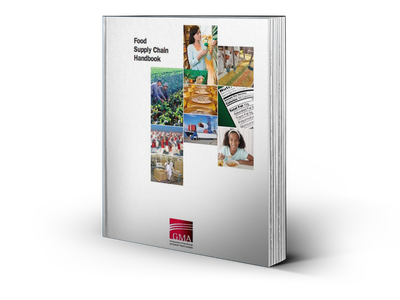 The Grocery Manufacturer’s Association is now helping food brands and distributors select their ingredient suppliers. In a free guide available for download, they outline all of the traditional procurement steps and evaluation standards food company’s now use as they are selecting their preferred ingredient suppliers.
The Grocery Manufacturer’s Association is now helping food brands and distributors select their ingredient suppliers. In a free guide available for download, they outline all of the traditional procurement steps and evaluation standards food company’s now use as they are selecting their preferred ingredient suppliers.
Whether you’re a young food company or a seasoned brand, you can brush up on your skills and make sure that you’re covering all of the necessary QA and procurement steps. We’ve created a summary review below, or you can download this free resource guide produced by the Grocery Manufacturer’s Association here.
The Purpose of The Food Supply Chain Handbook
Being able to produce and distribute safe food is vital for food companies.
The best way to be able to produce and sell safe food is to only use suppliers that are capable of providing safe ingredients, packaging and services. These are going to be suppliers that can complement your food safety goals already in place. You’ll also probably enjoy working with them, because both of your services and purposes are in sync.
The GMA Guide outlines all of the necessary steps of the procurement process you will need to follow to thoroughly review suppliers and decide if they are a ideal and safe fit for your company.
Below is a review of these steps, which you can learn about in more detail by downloading the eBook.
Supplier Pre-Assessment and Review
When you search for a supplier, you’ll want to do a pre-assessment and review of quality and safety policies to make sure the potential vendor is worthy of being reviewed in more detail.
Ask for things like a 3rd party audit, HACCP program, SOPs, GMP policy, pest control program, allergen program, recall program and other safety and sanitary basics for a food ingredient supplier.
Documentation and Record Keeping
Make sure that the supplier(s) that you’re considering have good writen control procedures. Understanding how they keep records and create policies will help you evaluate if you both support the same kind of safety goals.
Supplier Documentation Available
Can they provide a letter of guarantee, spec sheet and certificate of analysis? Make sure they have a simple way of disseminating this information to you when you need it.
Audit
Have they been audited by an independent 3rd party? If not, do they perform documented internal audits? These audits typical cover topics like:
- Quality and food safety program effectiveness reviews
- Reliability of reporting and documentation systems
- Plant inspections against GMPs
Regulatory Compliance & Food Defense
No matter which supplier you choose, you’ll want to make sure that they meet all federal, state and local regulations.
Typical documents required under this section include the Bioterrorism Act Statement and the FDA food facility registration.
Sanitation Programs
You’ll want to understand if your supplier has a sanitation program in place. This is often documented in the form of a Good Manufacturing Policy or Standard Operating Procedures (SOPs).
Food Safety
In the same line, you’ll want to understand if your supplier has good food safety policies in place. For example, do they have a product recall program and HACCP program outline available for you?
Allergen Control
Because of the strict allergen control policies that you need to stand by as a food manufacturer, your ingredient suppliers must also have a strong allergen control policy in place. You should be able to get allergen statements on each type of ingredient, as well as see a full allergen control program policy statement (often covered in the SOPs document).
Foreign Material Control
Each supplier will need to document their foreign material control program to you if they don’t have a 3rd party audit. If they do, this topic is well-covered and has been reviewed in detail to ensure safety.
Product Lot Coding And Traceability
Your ingredient suppliers should have a lot coding system put into place for traceability. This allows them to track particular lots if there is ever a problem, and understand exactly which product came from where and went to who.
You should be able to get a lot coding “key” sheet to understand exactly how they lot code as well.
Product Testing
Your ingredient suppliers will typically offer some form of product testing. This information is most often provided on the COA for the product that you receive in an order.
Documented Complaints and Recalls
Each supplier you work with should be documenting any customer complaints related to product issues, as well as any recalls required.
Want to download the full guide? You can read it here.
Topics: Quality Control












